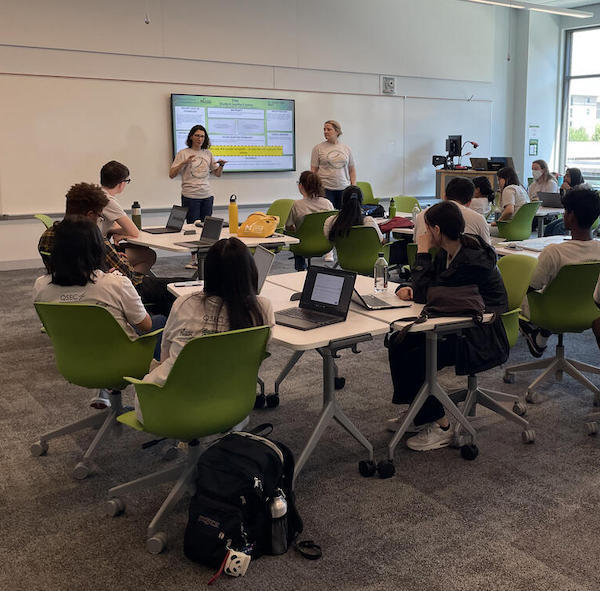George Mason University received a $1.25 million grant from the National Science Foundation (NSF) to launch a postdoctoral fellowship program that will prepare recent PhD graduates to be leaders in quantum education and workforce development research. The program focuses on addressing challenges in quantum education, particularly in building an inclusive and equitable workforce.

The George Mason University Quantum Education Research Postdoctoral Fellowship will be led by Jessica Rosenberg, an associate professor in the Department of Physics and Astronomy and director of education for the Quantum Science and Engineering Center.
“It’s an opportunity to bring together recent PhDs from different disciplines to think about the problem of building a diverse and equitable workforce from varying angles while also providing an environment for them to build and strengthen their careers in STEM education research,” said Rosenberg.
She will work alongside co-principal investigators Paula Danquah-Brobby, associate dean of access, belonging, and community engagement in the College of Science; Jill Nelson, an associate professor in the College of Engineering and Computing (CEC); and Nancy Holincheck, an assistant professor in the College of Education and Human Development (CEHD), to engage with fellows, provide mentorship, and assist in research projects.
According to Rosenberg, postdoctoral researchers occupy a unique and sometimes challenging phase in career development, where the level of support can vary significantly. They are learning to lead their own projects and take responsibility for forging their future careers, but they still need to develop additional skills. In the program, postdoctoral fellows will receive essential mentorship and networking opportunities and encouragement to develop their own projects and collaborate on existing ones. By working in a small cohort, participants will receive the guidance necessary to make the most of this critical stage in their careers.
“George Mason is a leading institution in the quantum education space,” said Rosenberg. “We are positioned well to provide a meaningful fellowship like this, to bring in folks and help them to really think through challenges and start their careers.”
“Fostering an inclusive and equitable workforce starts in the classroom,” said Danquah-Brobby. “It has been well established that diversity of thoughts, perspectives, lived experiences, disciplinarity, among others, is positively associated with scientific discovery, innovation, and achievement. To successfully rise to the myriad 21st-century challenges, centering diversity, inclusion, and equity throughout and across the STEM ecosystem is absolutely essential.”
The quantum field is rapidly evolving and expected to make significant impacts in the coming years, driven by initiatives like the National Quantum Act, which aims to accelerate quantum research and development. The U.S. government is increasing investments in quantum technologies that, Rosenberg explained, are poised to enhance various applications including communications through quantum cryptography and advanced sensing techniques. Notably, quantum sensing has already shown substantial progress, with potential uses in oil prospecting and military positioning, especially where GPS is unavailable.
Additional support of the grant will come from CEHD faculty members Supriya Baily, Sujin Kim, Shekila Melchior, and Lisa Tullo; Shá Norman, College of Visual and Performing Arts’ director of diversity; Erikca Brown, associate director for inclusive education; Christi Wilcox, CEC’s director of programs and research; Weiwen Jiang, CEC postdoctoral research associate; and Benjamin Dreyfus, associate professor in the Department of Physics and Astronomy.

During July 2023, Jessica Rosenberg coordinated the Pathways to Quantum Immersion Program, which helped high school students learn about the promise of quantum technologies.
Related News
- February 13, 2025
- October 28, 2024
- August 20, 2024
